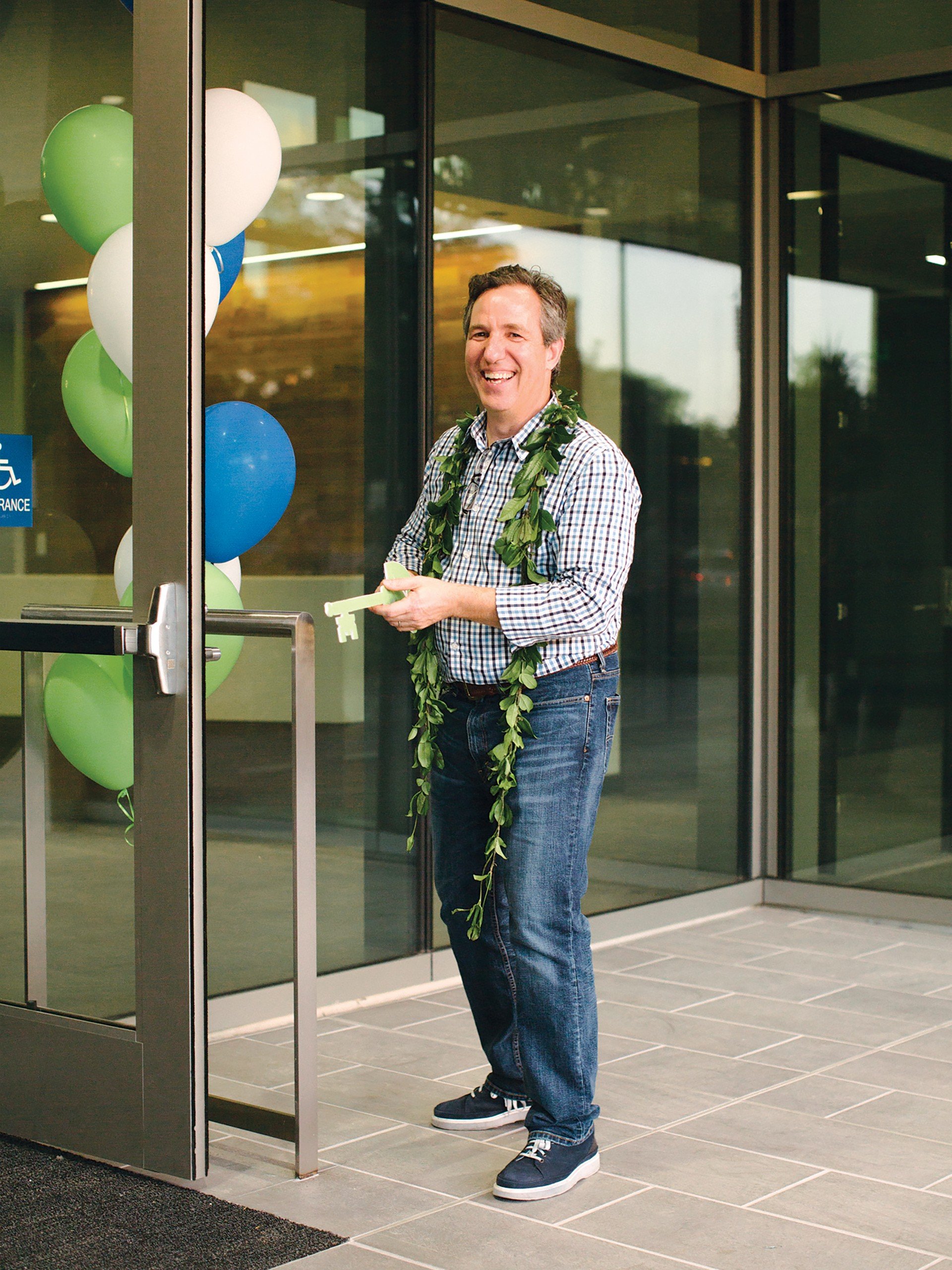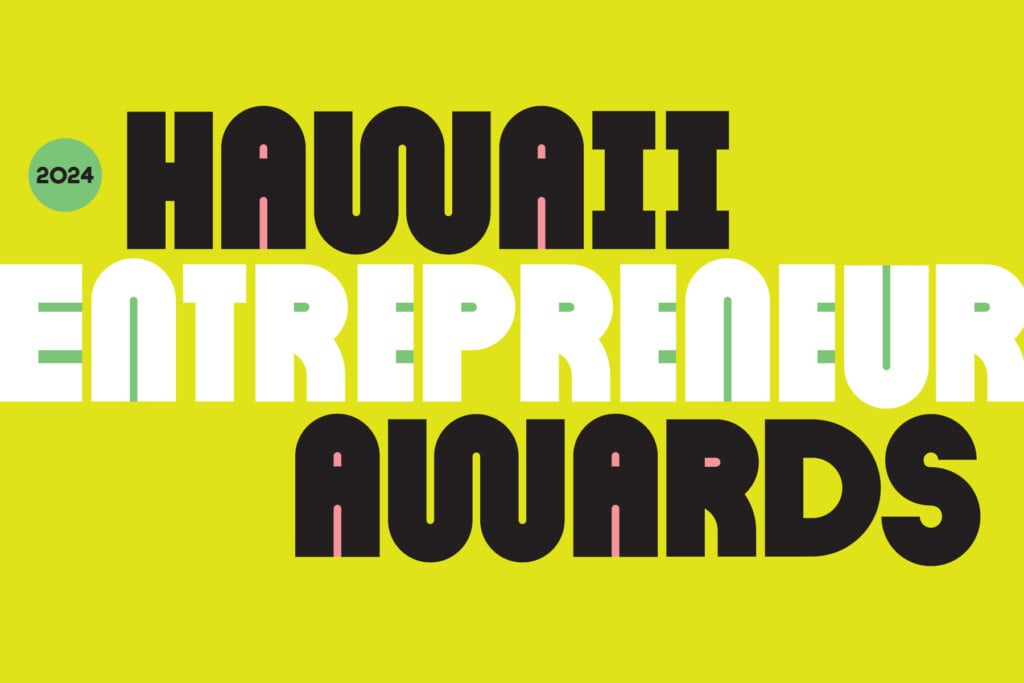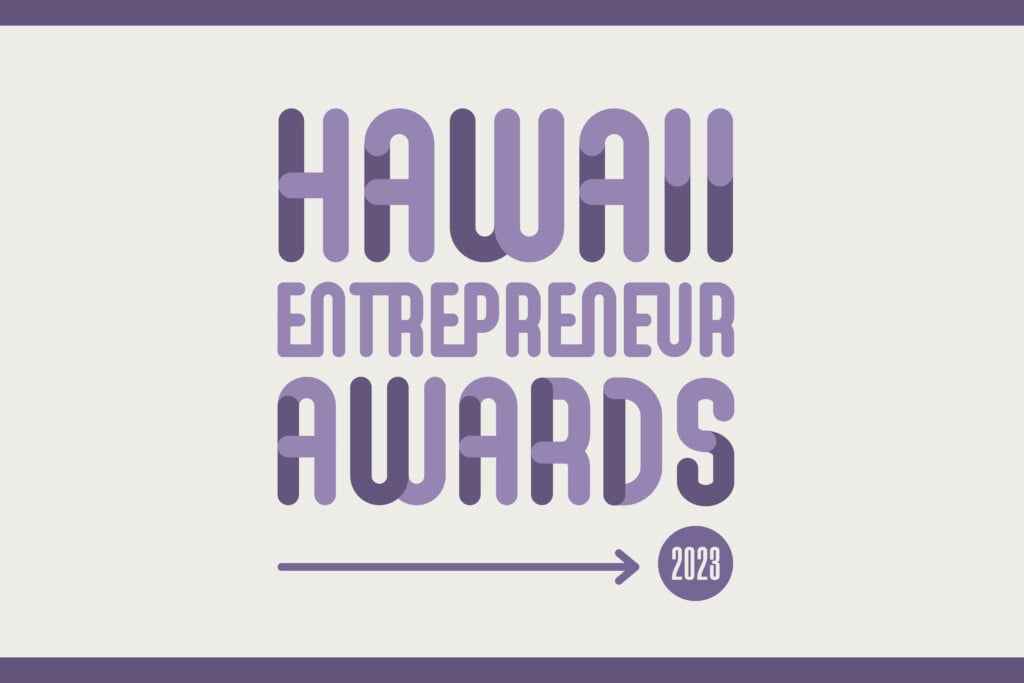5 Ways to Boost Local Innovation

Authors say Hawai‘i can help build a vibrant and diverse economy in the 21st century with a coordinated effort by business and government.
Visitor numbers keep setting records year after year, but core questions about tourism and the Hawai‘i economy haven’t changed for half a century: How do we hedge against economic vulnerability when tourism is our No. 1 industry? And how can we build viable, sustainable and scalable economic industries in our unique island environment that create prosperity for local people instead of for just a few heads of industry, many of them out-of-state owners?
To answer these questions, first consider why tourism thrives today. Hawai‘i’s natural beauty and the aloha spirit have always attracted visitors, but it was commercial jet travel starting in the 1960s that made it possible for millions to come. Big passenger jets were the major innovation that allowed affordable, transcontinental travel by the masses.
Just as innovation helped create Hawai‘i’s vibrant tourism industry, innovation can create new industries in the Islands – if we create the right conditions.
Barry Weinman, a longtime Silicon Valley venture capitalist, outlines three types of innovation:
1. Interesting innovation, which improves existing products and services
2. Incredible innovation, which creates new products and services, such as cars replacing horses
3. Inconceivable innovation, which is something not even imagined beforehand by most people, such as the cellphone, genetic engineering, the internet and many apps.
“Incredible and inconceivable innovations are what Hawai‘i should be aiming to build industries around because they create markets, they’re scalable, and they can generate significant value for both Hawai‘i and the world. We need to focus on finding ways to change life as we know it for the greater good beyond just our Islands,” says Weinman.
“But innovations don’t have to be purely tech-focused. There are many opportunities to capitalize on new ideas and new products to address needs in emerging markets across different business sectors. We need to be creative and expand our thinking when it comes to building economic alternatives to tourism or food products. Launching the next great cookie or another brand of jams and jellies isn’t exactly changing the world.”
The answer to diversifying Hawai‘i’s economy may be innovation driven enterprises. IDEs are businesses that generate market-creating innovations, and thereby create jobs, elevate society and launch systemic cultural change. Their innovation creates prosperity.
IDEs are fundamentally different from the conventional small and medium-sized enterprises, or SMEs, that make up 99.3% of all businesses statewide, according to a 2018 report by the U.S. Small Business Administration. SMEs serve a local market, operate under regular business models, and often have a limited competitive advantage. These businesses include mom and pop stores, neighborhood restaurants and service-related companies.
SMEs are essential to the local economy and employ about half of Hawai‘i’s workforce, according to the SBA report, but their individual and collective impact usually remains local. IDEs, however, can boost the local economy and become global game changers – and that makes Hawai‘i and its residents much less economically vulnerable.
A report by MIT’s Bill Aulet and Fiona Murray for the Ewing Marion Kauffman Foundation says IDEs “pursue global opportunities based on bringing to customers new innovations that have a clear competitive advantage and high growth potential.” If Hawai‘i shifted its investment focus to also support local IDEs that advance incredible or inconceivable ideas, we could foster a thriving culture of entrepreneurship, create tens of thousands of high-paying jobs, help close the wealth gap and fuel Hawai‘i’s overall economic expansion and diversification.
Focusing on IDEs isn’t a zero-sum game; SMEs are necessary to a vibrant, diversified ecosystem. It’s not “either/or” for our economy, but rather “yes and” – continuing to support SMEs while providing additional resources and a dedicated effort to grow IDEs.

Rich Wacker, CEO of American Savings Bank, believes the greater local community should benefit from any initiatives that support an innovation-based economy.
“Growing a significant innovation-based sector of the economy for Hawai‘i isn’t going to happen just because we talk about it. It will require thoughtful pro-innovation state policy plus deliberate and intentional actions by the private business community,” says Rich Wacker, CEO of American Savings Bank.
“Done right with a commitment to the long-term and short term wins, we have a real opportunity to broadly benefit people across our community,” says Wacker, who is also the leader of the Hawaii Business Roundtable’s innovation economy task force and the innovation economy subcommittee of the Hawai‘i CHANGE Initiative.
The prospect of an innovation economy already looks promising. In the past decade, Hawai‘i’s innovation ecosystem has grown significantly with limited resources. The first Hawai‘i-based venture accelerator program was launched just six years ago but today two accelerator programs – Blue Startups and our XLR8UH – have been ranked among the nation’s top 30 out of thousands of such programs.
These accelerators have funded hundreds of startups and created thousands of jobs. Just imagine if Hawai‘i doubled down on innovation. Below, we offer five ways Hawai‘i could flex its policy muscle to boost the local innovation economy for today’s residents and our children’s future.
1. Create Long-term Funding for Accelerators
Most innovation accelerators face the same problem: securing consistent funding each year to sustain and grow their programs. A state government fund of $10 million to 15 million to fund Hawai‘i-based accelerators over five to 10 years would help stabilize and expand accelerators that have already gained momentum in the community and create opportunities for new accelerators, thereby creating a more stable launch pad ecosystem for IDEs.
The key to making this concept work would be long-term state funding, not an annual grant. If each funded accelerator were guaranteed a minimum two or three years of funding with an opportunity to apply for additional funding annually, accelerators could plan strategically and focus more on supporting their entrepreneurs rather than getting stuck on the tenuous merry-go-round of annual fundraising.
2. Offer an Innovation Tax Incentive
Stay with us here: The proposed innovation tax incentive would apply to corporations, not individuals. Government policies designed to drive innovation are an essential piece of the innovation pie, but we also need equal buy-in from the private sector to make real progress.
Historically, there has been little corporate investment in innovation in Hawai‘i compared with other states; this has stunted innovation and created an additional hurdle for local IDE entrepreneurs: They have to raise venture capital outside Hawai‘i because they simply can’t raise it in their own backyard, which should be their first funding source.
An innovation tax incentive could funnel much-needed investments of capital and resources from corporations into our innovation economy – hundreds of millions of dollars a year, if not billions.
Granted, Hawai‘i tried something similar in the past with Act 221, but this was before we had credible, nationally recognized accelerators filtering through startups and providing them with solid foundations for venture financing, and was an incentive program geared toward individual investors rather than to nurturing talent (see No. 3) or getting corporate buy-in.
If Hawai‘i modified and updated innovation tax credit programs (rather than scrapping them entirely) perhaps corporations could receive tax incentives for investing in the innovation sector or providing matching funds to government-funded innovation initiatives. The tax credit could even be structured to provide tiered incentives for Hawai‘i businesses and out-of-state corporations, encouraging both local investment and an influx of new capital from innovation-rich areas like Silicon Valley, Seattle and New York City.
3. Provide Talent Stipends and Incentives
While funding IDEs accelerates the growth and success of innovation economies, people are the engine of every successful IDE. To foster innovation, we must invest in people, not just businesses.
That’s why at Sultan Ventures, we do more than just cut checks. We’re full-stack ecosystem investors, focusing on investing in talent as much as investing in companies. Launching a dedicated program that offers stipends and/or incentives to people working in the innovation industry in Hawai‘i would help attract, retain and develop talent here in the Islands rather than losing them to higher salary offers from other innovation regions.
IDEs create a multiplying effect. In his book “The New Geography of Jobs,” economist Enrico Moretti says that for every IDE-based job, five jobs are created and supported in the regional economy. In Hawai‘i, this would create a sustainable local workforce to power an innovation economy and could also help reverse “brain drain” and persuade many kama‘āina to move home by offsetting Hawai‘i’s high cost of living and relatively lower salaries.
A stipend program offering matches or rebates to IDEs could start at $10 million for the first year and could be structured at different levels: small stipends for interns and fellows, signing bonuses to attract new talent and tiered-annual stipends designed to retain talent and provide total compensation comparable to what employees make in other innovation regions. In addition to stipends, offering incentives to individuals would reduce the overall cost of living for those working in the innovation industry in various ways, such as via tax rebates and housing credits.
4. Develop an Innovation District
Innovation districts have risen in cities like Austin, Nashville, Detroit and Boston, where local governments collaborated with community partners to create power bases for regional innovation. Fueled by a mix of public and private stakeholders, these innovation districts reimagine thriving communities that align with an evolving U.S. economy increasingly shaped by high-tech companies like Amazon, Google and Apple.
Often located in degraded urban areas, innovation districts also make use of underused real estate, including retail spaces left vacant in the Amazon era. While land is at a premium in the Islands, creating a local innovation district could help revitalize underutilized land zoned for industrial or commercial use to its highest and best use by creating new, sustainable industries and high-paying jobs.
If we got creative with the location of our innovation district and developed mixed-use live-work innovation communities, we might even be able to diversify our economy while alleviating some of Hawai‘i’s most notorious problems: gridlocked traffic and a lack of affordable housing.
5. Carve Out Funding for Venture Funds
Funding accelerators is a no-brainer when it comes to building a strong foundation for an innovation economy, but just funding early-stage ventures is not enough to sustain local innovation for the long haul. We must keep supporting IDE ventures after the startup phase to help them scale and avoid the “valley of death” that plagues so many ventures that can’t get the continued funding necessary for growth and scaling.
If the state Legislature allocated $30 million to $50 million (less than 1% of the state’s annual budget) to fund several Hawai‘i-based venture funds, we could meet a critical need in our innovation ecosystem. Each fund could be allocated $10 million a year and new fund managers could be given 18 months to raise matching funds, rather than the more common model of requiring private funding up front in order to get state matching funds.
The key to making this venture fund viable is ensuring a long-term commitment with funding periods of two years or more, as well as diversifying funds to support more than one venture fund.
There’s an enormous opportunity to retain the ventures that launch here but are forced to go elsewhere to grow. Hawai‘i is great at planting seeds, but let’s start to water them so they can grow and mature locally. Only then can we harvest the fruits of our innovation efforts rather than exporting them to ripen in other markets.
Conclusion
We feel these steps are five relatively simple ways that Hawai‘i can help build an innovative and diversified economy. Success depends on multiple things done in parallel over the long run by both the public and private sectors. We welcome your thoughts on the best way forward.
About the Authors
Omar Sultan and Tarik Sultan are trailblazers in Hawai‘i’s innovation ecosystem and internationally recognized thought leaders in building innovation communities through entrepreneurship and education. They regularly give keynote addresses around the world.
Their Hawai‘i-based innovation initiatives have received national awards from the federal Small Business Administration and the Commerce Department’s Economic Development Administration. Their XLR8UH program was named a Forbes Top 30 accelerator in the nation.
This edition of their monthly column called Inside Startup Paradise describes how they think government and business can work together to build an innovation economy in the Islands.






